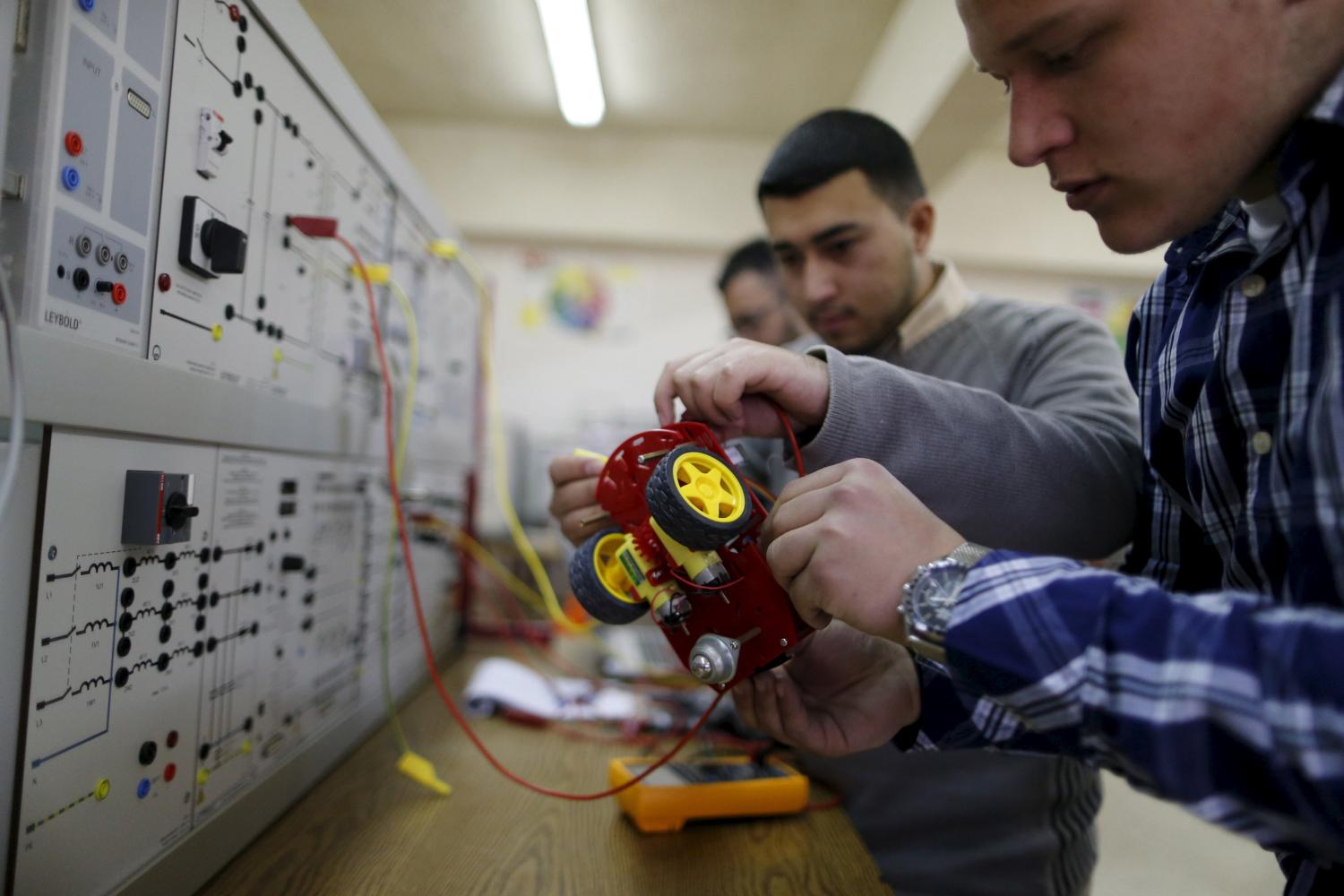The dominant narrative about Arab youth is deeply
worrying. A generation of Syrians, Iraqis, Libyans,
Sudanese, and Yemenis are without an education and
are losing their futures to intractable conflict. Arab
youth form the largest demographic in the Middle
East and North Africa (MENA), but rather than being
viewed as a gift to the region, they are seen as a liability.
Yet few leaders have had the foresight to understand
that remedying disfranchisement and uprooting
extremism cannot be achieved without creating opportunity
and seeding hope among these youth.
In the past 15 years, important progress has been
made in the field of education in the Arab world. This
includes increasing universal primary access by 10
percent, increasing youth and adult literacy by 22
percent, and achieving greater gender parity at the
primary level in several countries.
However, as important as these gains have been, they
have not delivered the desired learning outcomes
and the skills required by the labor market. The Arab
World Learning Barometer (Brookings 2014) estimates
that 50 percent of children in school are not meeting
basic international literacy and numeracy proficiency
standards. At the same time, private sector employers
in the region believe that the low quality of education
is the cause of the skills mismatch and is also thus an
impediment to economic growth (ILO 2015).
Countless reports have been written warning of the
dangers of an Arab youth population growing disenfranchised
and calling on governments in the region
to respond with education and economic reform
(Bardak, Huitfield, and Wahba 2006; ITU 2014). For
the most part, however, these reports have been met
by independent initiatives rather than by systemic
change efforts.
In drawing up their 2030 Sustainable Development
Agenda, the countries in the region must redesign
their education systems to be smarter and work more
effectively to support their youth, helping them gain
the skills they need to be prepared not just for the
present but also for the future of work.
In every country in the MENA region, Arab youth, entrepreneurs, civil society advocates, and others are attempting to bring about positive change for both youth and their communities through innovative education initiatives.
This working paper identifies reasons to be hopeful.
In every country in the MENA region, Arab youth,
entrepreneurs, civil society advocates, and others
are attempting to bring about positive change for both youth and their communities through innovative
education initiatives. Some governments have also
helped to drive important progress for their youth. At
present, more youth are graduating from secondary
and tertiary schools and programs than ever before
(World Bank 2015). In some countries, young women
have raced past young men in their educational
achievement and completion rates (UNESCO 2015).
And several countries, especially the Gulf states, are
committed to education reform and thus are making
large investments to advance their education systems.
Moreover, a growing number of leaders in the Arab
world recognize that incremental education reform is
not enough. The rapid evolution of information technology
has ushered in the Information Age, creating a
fundamentally different world of work than what the
region has been preparing its youth for (Castells 2011).
This working paper highlights five major trends that
point to a tremendous opportunity for the Arab world
to use technology to leapfrog in making educational
advances. These trends can be summarized as follows:
- Longer life expectancies are requiring young
people to plan for more working years, thus requiring
them to become lifelong learners. They
also need to become generalists or transdisciplinarians. - More automation is bringing an end to traditional
jobs. There is a need to develop opportunities
for highly skilled workers and to enhance
formal skills such as communication and problem
solving. - The explosion of the data analytics field has
seen a rise in demand for higher-order analytical
skills and advanced digital literacy, as well as
strengths in science, technology, engineering,
and math (STEM) subjects, in particular computer
programming. - The rise of new forms of media is changing the
nature of learning and our understanding of how
children learn. Gaming, animation, and other
types of virtual networks are demanding a new
form of literacy and are promoting new models
for collaboration and communication. - As the nature of work is changing, so also are
the structures of organizations, which are shifting
toward being interconnected. They are becoming
more diverse, not only in their makeup
but also in their operations, resulting in more
flexibility and opportunity. This, in turn, means
that workers are expected to become more
adaptable to changing environments, have an
awareness of various cultures and know how to
function and communicate in virtual environments.




